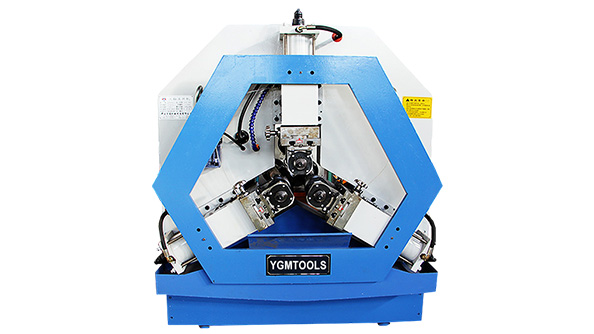
-
 Afrikaans
Afrikaans -
 Albanian
Albanian -
 Amharic
Amharic -
 Arabic
Arabic -
 Armenian
Armenian -
 Azerbaijani
Azerbaijani -
 Basque
Basque -
 Belarusian
Belarusian -
 Bengali
Bengali -
 Bosnian
Bosnian -
 Bulgarian
Bulgarian -
 Catalan
Catalan -
 Cebuano
Cebuano -
 Corsican
Corsican -
 Croatian
Croatian -
 Czech
Czech -
 Danish
Danish -
 Dutch
Dutch -
 English
English -
 Esperanto
Esperanto -
 Estonian
Estonian -
 Finnish
Finnish -
 French
French -
 Frisian
Frisian -
 Galician
Galician -
 Georgian
Georgian -
 German
German -
 Greek
Greek -
 Gujarati
Gujarati -
 Haitian Creole
Haitian Creole -
 hausa
hausa -
 hawaiian
hawaiian -
 Hebrew
Hebrew -
 Hindi
Hindi -
 Miao
Miao -
 Hungarian
Hungarian -
 Icelandic
Icelandic -
 igbo
igbo -
 Indonesian
Indonesian -
 irish
irish -
 Italian
Italian -
 Japanese
Japanese -
 Javanese
Javanese -
 Kannada
Kannada -
 kazakh
kazakh -
 Khmer
Khmer -
 Rwandese
Rwandese -
 Korean
Korean -
 Kurdish
Kurdish -
 Kyrgyz
Kyrgyz -
 Lao
Lao -
 Latin
Latin -
 Latvian
Latvian -
 Lithuanian
Lithuanian -
 Luxembourgish
Luxembourgish -
 Macedonian
Macedonian -
 Malgashi
Malgashi -
 Malay
Malay -
 Malayalam
Malayalam -
 Maltese
Maltese -
 Maori
Maori -
 Marathi
Marathi -
 Mongolian
Mongolian -
 Myanmar
Myanmar -
 Nepali
Nepali -
 Norwegian
Norwegian -
 Norwegian
Norwegian -
 Occitan
Occitan -
 Pashto
Pashto -
 Persian
Persian -
 Polish
Polish -
 Portuguese
Portuguese -
 Punjabi
Punjabi -
 Romanian
Romanian -
 Russian
Russian -
 Samoan
Samoan -
 Scottish Gaelic
Scottish Gaelic -
 Serbian
Serbian -
 Sesotho
Sesotho -
 Shona
Shona -
 Sindhi
Sindhi -
 Sinhala
Sinhala -
 Slovak
Slovak -
 Slovenian
Slovenian -
 Somali
Somali -
 Spanish
Spanish -
 Sundanese
Sundanese -
 Swahili
Swahili -
 Swedish
Swedish -
 Tagalog
Tagalog -
 Tajik
Tajik -
 Tamil
Tamil -
 Tatar
Tatar -
 Telugu
Telugu -
 Thai
Thai -
 Turkish
Turkish -
 Turkmen
Turkmen -
 Ukrainian
Ukrainian -
 Urdu
Urdu -
 Uighur
Uighur -
 Uzbek
Uzbek -
 Vietnamese
Vietnamese -
 Welsh
Welsh -
 Bantu
Bantu -
 Yiddish
Yiddish -
 Yoruba
Yoruba -
 Zulu
Zulu
thread rolling machine working
Understanding the Working Mechanism of Thread Rolling Machines
Thread rolling machines are vital tools in the manufacturing sector, particularly in the production of fasteners and various threaded components. These machines utilize a process called thread rolling to form threads on a workpiece, which is typically made of metal. The efficiency and precision of thread rolling machines make them indispensable in industries such as automotive, aerospace, and general manufacturing.
Understanding the Working Mechanism of Thread Rolling Machines
One of the primary advantages of thread rolling over cutting is its ability to produce stronger threads. During the rolling process, the grain structure of the metal is compressed and aligned along the thread's axis, which enhances its resilience. This characteristic is particularly important in applications where the threads will be subjected to significant stress or load, ensuring the integrity and longevity of the fasteners.
thread rolling machine working

The operation of a thread rolling machine can be broken down into several stages. Initially, the machine is set up with the appropriate dies for the thread size and type required. Once the blank is positioned correctly, the rolling process begins. The dies move towards each other, exerting pressure on the blank, which causes the material to flow and conform to the shape of the dies. This action is typically executed at high speeds, allowing for rapid production rates.
There are generally two types of thread rolling machines flat die machines and cylindrical die machines. Flat die machines use flat dies to roll threads on flat surfaces, while cylindrical die machines are suited for rolling threads on cylindrical workpieces. Each type has its specific applications depending on the design and requirements of the thread being produced.
Moreover, the thread rolling process can accommodate various thread forms, including external and internal threads, depending on the tooling used. This versatility makes thread rolling machines exceptionally useful in producing a wide range of components, from simple screws to complex automotive parts.
In conclusion, thread rolling machines are essential for efficiently producing high-quality threaded components. Their ability to create stronger threads while maintaining material integrity offers significant advantages over traditional machining methods. As technology continues to evolve, we can expect further innovations in thread rolling machinery, enhancing performance, and productivity in the manufacturing industry. By understanding and harnessing the capabilities of these machines, manufacturers can meet the growing demands for robust, reliable fasteners in an increasingly competitive market.
